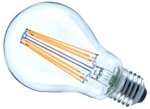100w Equivalent LED GLS Bulbs
Looking for a LED GLS light bulb that is equivalent to a 100w incandescent? Then look no further than BLT Direct's range of 100w equivalent LED GLS bulbs, available in a range of colour temperatures and cap bases. Our LED alternatives match the lumen output of incandescent bulbs but use up to 90% less energy, saving you money and making your home more eco-friendly. This allows you to have brilliant, radiant lighting without needing to break the bank, or causing damage to the environment. Check out our selection of 100w equivalent LED GLS bulbs below.
What LED bulb is equivalent to 100w?
In our range we have different wattages to replace 100 watt GLS incandescent bulbs, this is because manufacturers have different lumen to wattage measurements based on how the bulbs are produced, making some options have a higher lumen per watt ratio and increasing energy efficiency. Our LED alternatives have a wattage of around 10-15w, this radically reduces the energy used per bulb, saving you money long term. It's no surprise that when replacing old incandescent with modern LED GLS light bulbs, people come to BLT Direct, one of the leading manufacturers of LED bulbs in the UK.
Is 100w equivalent too bright?
With new LED technology changing the way people perceive light bulbs it is no longer effective to estimate a light bulbs brightness based on the wattage. This is because LEDs are much more efficient than incandescent bulb, and therefor will have a lower wattage, all while maintaining lumen output, which is the real unit of 'brightness'. If you want an estimate on how bright a light bulb will be then lumen output is what you should look for. Luckily for you, we have clearly labelled all of out LED GLS bulbs, so you will know exactly what bulb is right for you. With lumen ranges of 1000-1500, we ae sure to have a 100w equivalent LED GLS bulb that is suitable for you.
Do LEDs get hot?
LED bulbs only get a fraction as hot as previously used incandescent lighting. This is because of the way they generate light. An incandescent heats a filament until it glows to produce light, this wastes a lot of energy as most of the energy is wasted producing heat, where as an LED bulb has a current that runs through a semi-conductive material, making light more effectively. LED bulbs also have a 'heat sink' in the base of the bulb which pulls heat out of the main bulb and allows it to dissipate through the bottom into the air, keeping the bulb cool.













